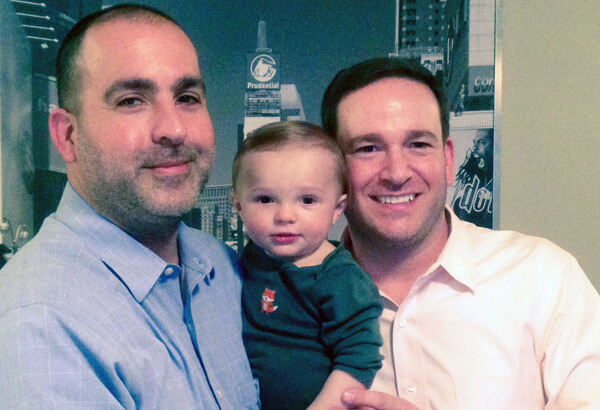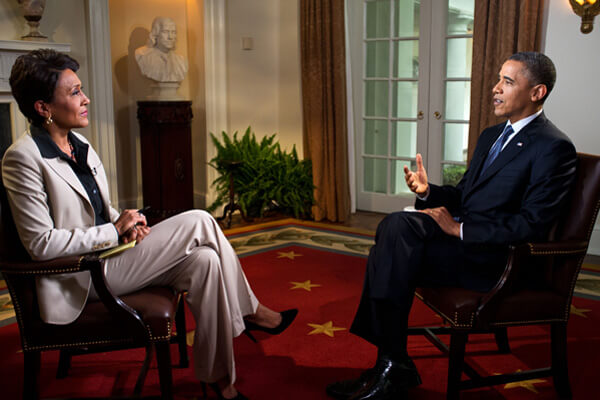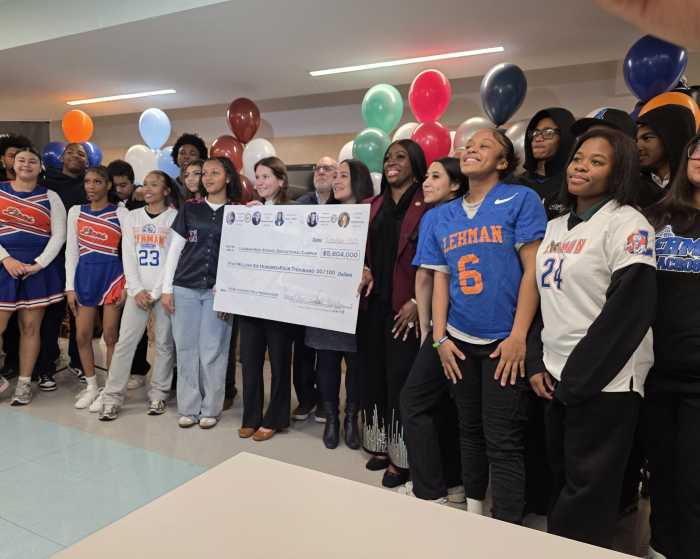New Yorkers Joseph Vitale and Robert Talmas are among plaintiffs challenging Ohio's ban on out-of-state marriage recognition, having gone to court to ensure that both of their names appear on the birth certificate of their Cincinnati-born adopted son Cooper. | GAY CITY NEWS
In a 2-1 ruling, the Sixth Circuit Court of Appeals has thrown out decisions from district court judges in Kentucky, Michigan, Ohio, and Tennessee that found bans on same-sex marriage and recognition of out-of-state marriages there unconstitutional.
In a November 6 decision written by Judge Jeffrey Sutton, the majority found that lower courts remain bound by a 1972 Supreme Court ruling that rejected a marriage equality case out of Minnesota for lack of a “substantial federal question” and that, in any event, such gay marriage bans have a rational basis that survives constitutional challenge.
The Sixth Circuit’s action is contrary to recent rulings from the Fourth, Seventh, Ninth, and 10th Circuits, all of which upheld lower court rulings throwing out marriage bans elsewhere. The Supreme Court’s decision on October 6 to decline review of the rulings from the Fourth, Seventh, and 10th Circuits and the Ninth Circuit’s own ruling the following day expanded the marriage equality map from 19 states plus the District of Columbia to 32 states in total so far. Three more states, where legal proceedings continue, are also bound by those appellate rulings.
The Sixth Circuit's disagreement with the four other circuit courts of appeals makes it likely that the Supreme Court will take up the merits of the marriage equality issue in the term ending next June.
Disagreement among circuit courts of appeals sets the stage for the Supreme Court to step in
In finding that the 1972 Minnesota precedent still applies, the Sixth Circuit ruling also flies in the face of nearly every federal court that has ruled on marriage equality since the 2013 Defense of Marriage Act decision by the Supreme Court. The DOMA ruling, in the eyes of most courts, makes clear that marriage equality does implicate a “substantial federal question.” If a majority of the Supreme Court felt otherwise, it certainly had the opportunity to accept review of the other appellate rulings and summarily reverse them.
On the question of whether marriage bans survive what is known as rational basis review –– the least demanding form of judicial scrutiny that gives deference to the presumption that laws are rationally based –– Sutton wrote, “A dose of humility makes us hesitant to condemn as unconstitutionally irrational a view of marriage shared not long ago by every society in the world, shared by most, if not all, of our ancestors, and shared still today by a significant number of the States.”
Sutton finds two rationales that “meet this low bar.” The first is “that governments got into the business of defining marriage, and remain in the business of defining marriage, not to regulate love but to regulate sex, most especially the intended and unintended effects of male-female intercourse.” Marriage, then, is a rational response to the need to create incentives for couples who unintentionally have children –– and same-sex couples do not have children in this way.
This perspective, of course, ignores the harms that the children of same-sex couples may suffer as the result of their parents’ inability to marry, consequences that other circuits and the Sixth Circuit dissent emphasized.
The second rationale Sutton credits is a state’s desire “to wait and see before changing a norm that our society (like all others) has accepted for centuries.”
Sutton also argues that recognizing a right of same-sex couples to marry “would create line-drawing problems of its own… If it is constitutionally irrational to stand by the man-woman definition of marriage, it must be constitutionally irrational to stand by the monogamous definition of marriage.”
The majority found that marriage bans are not based in animus or prejudice, which the Supreme Court has found to be an unconstitutional basis for denying a right to a specific class of people. Voters were not enshrining prejudice when approving marriage referendums, Sutton wrote, they were merely codifying “a long-existing, widely held social norm already reflected in state law.”
Turning to the argument that the Supreme Court has identified marriage as a fundamental right, for which restrictions must be examined using strict judicial scrutiny, Sutton argues that none of the rulings on that point –– including the 1967 Loving decision that struck down bans on interracial marriage –– contemplated any marriages other than those between one man and one woman. Here again, he refers to the issue of “line-drawing problems.” And he defines the plaintiffs' aim as not seeking recognition of an existing right, but rather the creation of a new right.
Sutton concluded his opinion by observing, “This case ultimately presents two ways to think about change. One is whether the Supreme Court will constitutionalize a new definition of marriage to meet new policy views about the issue. The other is whether the Court will begin to undertake a different form of change — change in the way we as a country optimize the handling of efforts to address requests for new civil liberties… If the Court takes the second approach, is it not possible that the traditional arbiters of change — the people— will meet today’s challenge admirably and settle the issue in a productive way?”
For Sutton, that second route is preferable.
“When the courts do not let the people resolve new social issues like this one, they perpetuate the idea that the heroes in these change events are judges and lawyers,” he wrote. “Better in this instance, we think, to allow change through the customary political processes, in which the people, gay and straight alike, become the heroes of their own stories by meeting each other not as adversaries in a court system but as fellow citizens seeking to resolve a new social issue in a fair-minded way.
In her impassioned dissent, Judge Martha Craig Daughtrey wrote, “The majority sets up a false premise — that the question before us is ‘who should decide?’ — and leads us through a largely irrelevant discourse on democracy and federalism. In point of fact, the real issue before us concerns what is at stake in these six cases for the individual plaintiffs and their children, and what should be done about it.”
Writing that the 1972 Minnesota precedent is essentially a “legal ‘dead’ letter,” Daughtrey was scornful of the majority’s finding that the need to address the problem of unintended procreation was a rational basis for existing marriage law in Kentucky, Michigan, Ohio, and Tennessee, saying it reflected “the same tired argument” used by advocates for same-sex marriage bans everywhere. That argument, she pointed out at length, takes no account of the welfare of the intended children of same-sex couples, who number more than 200,000 according to expert testimony in one of the marriage cases she cited. And Daughtrey was dismissive of Sutton’s prescriptions to “let the people decide” and let the states “wait and see.”
Finally, Daughtrey concluded that animus is at the heart of gay marriage bans, arriving at that finding not because the court can “divine individual malicious intent,” but rather because the bans are “based not upon relevant facts, but instead upon only a general, ephemeral distrust of, or discomfort with, a particular group.”
Sutton was joined in his opinion by Judge Deborah Cook. Both were appointed to the court by President George W. Bush. Daughtrey was appointed by President Bill Clinton.
After four circuit court appellate rulings upholding the right of same-sex couples to marry, the Supreme Court is now faced with the opposing view. On several occasions, Justice Ruth Bader Ginsburg has said publicly that a circuit split is what will compel the high court to weigh in. The immediate question is how quickly the process to seek appeal by the plaintiff couples proceeds. If they are able to move expeditiously, the Supreme Court could hear the case in this term and render a final decision by June of next year.
Chase Strangio, a staff attorney at the American Civil Liberties’ LGBT Project, which represents some of the plaintiffs in the cases before the court, said, “This decision is an outlier that’s incompatible with the 50 other rulings that uphold fairness for all families, as well as with the Supreme Court’s decision to let marriage equality rulings stand in Indiana, Wisconsin, Utah, Oklahoma, and Virginia…. We will be filing for Supreme Court review right away and hope that through this deeply disappointing ruling we will be able to bring a uniform rule of equality to the entire country.”




































